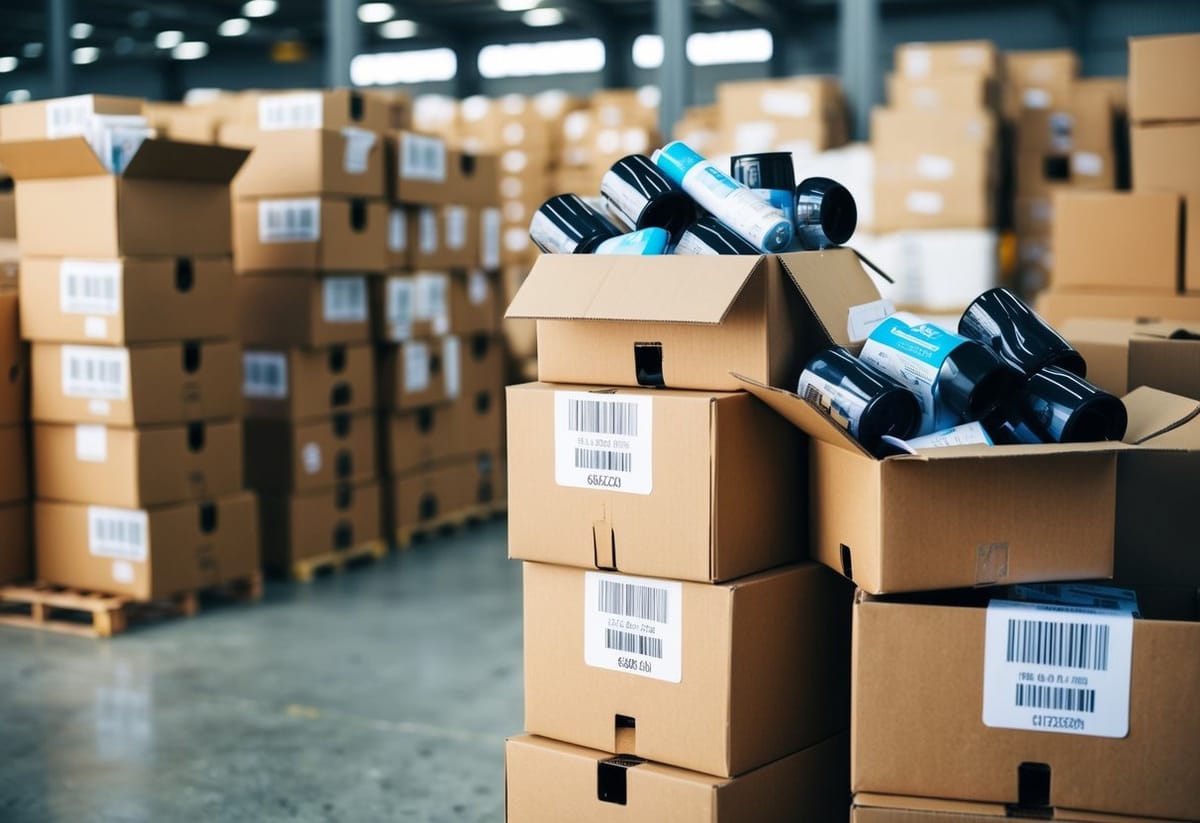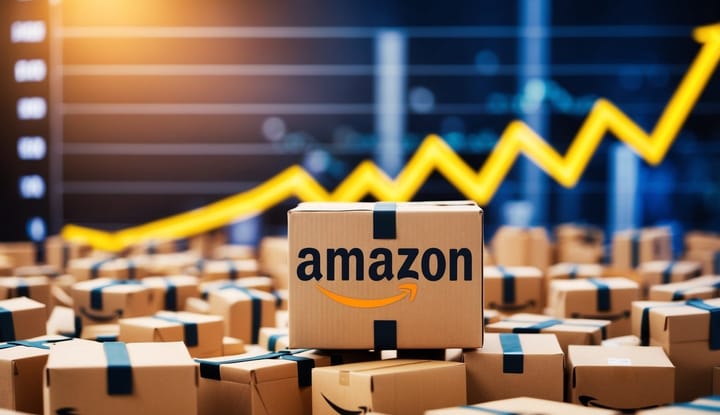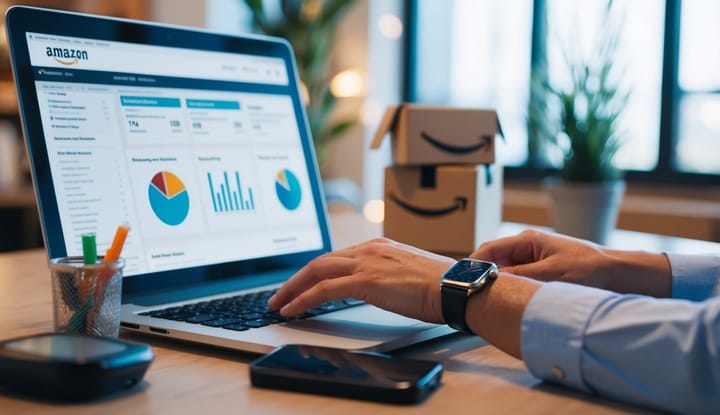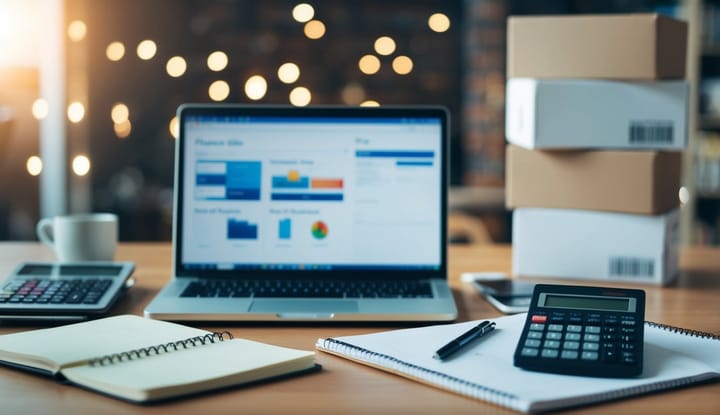Can You Lose Money on Amazon FBA: Understanding the Risks and Pitfalls

Amazon FBA (Fulfillment by Amazon) can be a great way for sellers to reach millions of customers. But it's not always a guaranteed path to profit.
Many sellers can and do lose money on Amazon FBA, especially when they don't fully understand the costs and challenges involved.
The fees for using Amazon's fulfillment services can add up quickly. These include monthly account fees, referral fees, and storage fees.
Sellers need to price their products carefully to cover these costs while still staying competitive.
New sellers often make mistakes that lead to losses. These can include picking the wrong products, not managing inventory well, or losing the Buy Box.
It's important to do thorough research and planning before jumping into Amazon FBA.
Key Takeaways
- Amazon FBA fees can eat into profits if sellers don't price products correctly
- Choosing the right products and managing inventory are crucial for success
- Sellers need to understand Amazon's complex system to avoid common pitfalls
Understanding Amazon FBA Mechanics
Amazon FBA is a service that handles storage, shipping, and customer service for sellers. It allows businesses to leverage Amazon's vast resources and reach millions of customers.
How Fulfillment by Amazon Works
Sellers send their products to Amazon warehouses. When a customer places an order, Amazon picks, packs, and ships the item. They handle returns and customer service too.
Amazon charges fees for storage and fulfillment. These fees vary based on item size, weight, and time in storage.
Sellers must factor these costs into their pricing.
FBA items are eligible for Prime shipping. This can boost sales, as many customers prefer fast, free delivery.
The Role of Amazon Sellers in FBA
Sellers using FBA focus on sourcing products and managing inventory. They create listings and set prices on Amazon's platform.
It's crucial for sellers to track their inventory levels. Running out of stock can hurt sales rankings. Overstocking leads to higher storage fees.
Sellers must also monitor product performance and adjust strategies as needed.
This includes optimizing listings, running promotions, and managing customer feedback.
FBA sellers can save time on logistics, but they still need to stay active in their business.
Success requires careful planning and ongoing management.
Start-Up and Operational Costs
Selling on Amazon FBA involves various expenses that can impact your profits. These costs include initial investments, ongoing fees, and marketing expenses.
Initial Investment for Amazon FBA Business
Starting an Amazon FBA business requires some upfront capital. Inventory is often the biggest expense. Many sellers begin with $500 to $5,000 for their first product order.
Other startup costs include:
- Product research tools: $20-$100 per month
- UPC barcodes: $30 for one, bulk discounts available
- Professional seller account: $39.99 per month
- Product photography: $20-$500 per product
- Packaging and inserts: $0.50-$5 per unit
Sellers should budget for these expenses to avoid cash flow issues when launching their business.
Recurring Fees and Amazon's Fee Structure
Amazon charges several fees for using their platform and fulfillment services. These fees can eat into profits if not carefully managed.
Common FBA fees include:
- Referral fees: 8-15% of sale price (varies by category)
- FBA fees: $2.50-$5.00 per unit (based on size and weight)
- Storage fees: $0.69-$2.40 per cubic foot per month
- Long-term storage fees: Additional charges for items stored over 365 days
Sellers must factor these costs into their pricing strategy to maintain profitability.
Budgeting for Advertising and Promotion Strategies
Marketing is key to success on Amazon. Most sellers spend money on advertising to boost visibility and sales.
Common promotional costs include:
- Amazon PPC ads: 5-20% of revenue
- Product launch discounts: 25-50% off retail price
- External traffic (social media, influencers): $100-$1000+ per month
New sellers often start with a small ad budget of $10-$20 per day.
As sales grow, they increase ad spend to scale their business.
Balancing these costs with potential profits is crucial for long-term success on Amazon FBA.
Maximizing Profits and Sales

Selling on Amazon FBA can be very profitable if done right. There are key ways to boost sales and profits while keeping costs down.
Strategies for Competing with Other Amazon Sellers
Finding the right niche is crucial. Look for products with high demand but less competition. Do product research to spot trends and gaps in the market.
Using repricing tools like SellerLogic can help win the Buy Box more often. The Buy Box is key for making sales on Amazon.
Offer great customer service to get good reviews. Positive reviews help your products rank higher in search results.
Analyzing Profit Margins and the FBA Revenue Calculator
Know your numbers to stay profitable. Use Amazon's FBA Revenue Calculator to estimate fees and profits for each product.
Track all costs, including product cost, shipping, and Amazon fees.
Aim for profit margins of at least 20-30% after all expenses.
Monitor your inventory levels closely. Having too much stock ties up money, while running out loses sales.
Optimizing Product Listings and Pricing
Use relevant keywords in your titles and descriptions. This helps shoppers find your products when they search.
Take clear, high-quality photos that show your product's features and benefits. Good images can boost sales a lot.
Price your items competitively, but don't go too low. Very low prices can make shoppers think the product is low quality.
Keep your listings up to date. Fix any errors quickly and add new info or photos as needed.
Overcoming Common Amazon FBA Challenges

Selling on Amazon FBA comes with unique hurdles. Sellers must handle inventory, deal with customer issues, and follow Amazon's rules. Let's look at key ways to tackle these challenges.
Managing Inventory and Avoiding Long-Term Storage Fees
Keeping the right amount of stock is crucial. Too much inventory leads to high storage fees. Too little means lost sales.
Use Amazon's reports to track sales trends. This helps predict future demand. Remove slow-moving items to cut storage costs.
Consider seasonal trends when stocking up. Sell or remove excess inventory before long-term storage fees kick in. These fees can eat into profits fast.
Set up alerts for low stock levels. This prevents running out of popular items. Use Amazon's tools to manage reorders and track shipments.
Dealing with Returns, Refunds, and Customer Reviews
Returns and refunds are part of selling online. Make sure products are well-packaged to reduce damage. Include clear instructions to lower return rates.
Handle returns quickly to keep customers happy. Check returned items carefully before reselling them. Some may need to be discarded.
Respond to negative reviews promptly and professionally. Try to resolve issues when possible. Good customer service can turn a bad review into a positive one.
Encourage happy customers to leave reviews. More positive feedback helps attract new buyers.
Navigating FBA Rules and Avoiding Account Suspension
Amazon has strict rules for sellers. Breaking them can lead to account suspension. Read and follow Amazon's policies carefully.
Keep accurate records of all transactions. This helps if Amazon asks for proof of purchases or sales.
Be careful not to violate any intellectual property laws. Only sell authentic products you have the right to offer.
Use Amazon's seller tools to stay compliant. These can help spot potential issues before they become problems.
If you get a warning, act fast to fix the issue. Respond to Amazon's concerns quickly and thoroughly. This can help prevent suspension.
Advanced Amazon FBA Strategies

Smart sellers use advanced tactics to boost their Amazon FBA success. These methods help grow sales, build brands, and increase profits.
Leveraging Amazon's Prime Membership
Prime members are key to FBA success. They shop more often and spend more money. Sellers can target Prime shoppers by:
• Offering Prime-eligible items
• Creating Prime-exclusive deals
• Using Prime shipping badges in listings
Prime items often rank higher in search results. This leads to more sales.
Sellers should focus on products that fit Prime's fast shipping rules. Good packaging is crucial for Prime items to arrive safely.
Utilizing Influencer Marketing for Brand Visibility
Influencers can boost a brand's reach on Amazon. Sellers can:
• Partner with influencers who match their brand
• Give influencers unique discount codes
• Ask influencers to make unboxing videos
This strategy works well for private label products. It helps build trust and interest in new brands. Sellers can use tools like Jungle Scout to find the right influencers.
Amazon's Influencer Program lets popular social media users create their own Amazon storefronts. Sellers can get their products featured on these pages.
Exploring Different Selling Models on Amazon
FBA sellers can try various models to grow their business:
- Private Label: Create unique products with your own brand
- Wholesale: Buy and resell existing branded items
- Online Arbitrage: Find deals online to resell on Amazon
- Retail Arbitrage: Buy discounted items from stores to resell
Each model has its own pros and cons.
Private label offers the most control but needs more upfront work. Wholesale can be steady but has tight margins.
Amazon Brand Registry protects private label sellers. It gives access to more ad types like Sponsored Brands. This helps new brands stand out.
Frequently Asked Questions
Many sellers have questions about the risks and potential for losses with Amazon FBA. These FAQs address common concerns around profitability, pitfalls, success rates, inventory issues, startup costs, and ways to reduce losses.
How long does it typically take to become profitable with Amazon FBA?
Most Amazon FBA sellers become profitable within 3-6 months. This timeline can vary based on factors like product choice, competition, and marketing efforts. Some sellers see profits faster, while others may take up to a year to break even.
What are the common pitfalls that lead to losses in Amazon FBA?
Poor product selection is a major pitfall. Choosing items with low demand or too much competition can lead to slow sales. Inventory issues like overstock or stockouts also cause losses. Pricing mistakes and high return rates hurt profits too.
What percentage of Amazon FBA businesses are successful?
About 20-30% of Amazon FBA businesses achieve long-term success. Many sellers give up within the first year due to challenges. Those who persist and adapt their strategies have better odds of building a profitable FBA business over time.
How does running out of stock affect my Amazon FBA business?
Stockouts hurt sales rank and visibility on Amazon. When items run out, listings lose momentum. Customers may buy from competitors instead. It can take weeks to regain lost rankings after restocking. Regular inventory checks help avoid this issue.
What are the overhead costs associated with starting an Amazon FBA business?
Key startup costs include inventory ($500-$3000+), product samples ($100-$300), and Amazon seller fees ($40/month). Other expenses may involve product photography, UPC codes, and shipping to Amazon. Marketing costs like PPC ads add to the total investment needed.
How can I minimize losses when starting with Amazon FBA?
Start small to test the market. Research products thoroughly before investing.
Use Amazon's tools to track inventory and restock on time. Price items competitively but with healthy margins.
Focus on quality to reduce returns. Learn from customer feedback to improve offerings.
Ready to Sell Smarter on Amazon FBA?
Join our mini-course at WAH Academy and get real-world tips on starting lean, tracking your numbers, and building a profitable FBA business—without the rookie mistakes.
No hype. No fluff. Just clear guidance to help you grow.
Tap the button and start selling smarter today.



